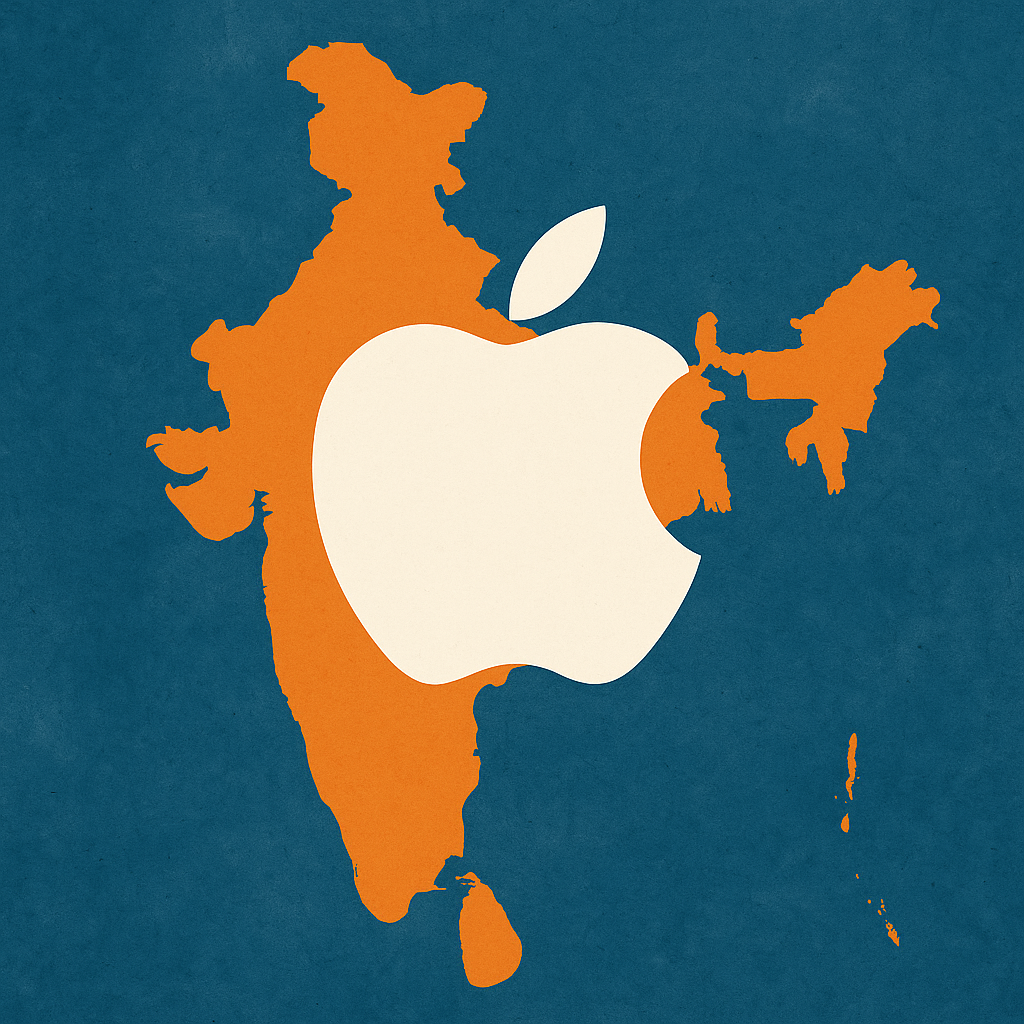Summary Points:
- Apple may assemble all 60 million U.S. iPhones annually in India by 2026.
- Currently, 30–40 million iPhones are already made in India—about 25% of global output.
- India’s low tariff advantage and contract manufacturers like Tata, Pegatron, and Foxconn are key enablers.
- Quality issues, workforce challenges, and Chinese export controls remain major roadblocks.
- China still produces nearly 80% of global iPhones but Apple is rapidly diversifying its supply chain.
Apple’s India Bet: From Backup to Base
In a move that could reshape global electronics manufacturing, Apple is planning to shift the entire assembly of iPhones sold in the U.S. to India by 2026, according to Financial Times.
The U.S. accounts for around 60 million iPhone sales annually, and this would mark a major turning point in Apple’s long-term strategy to reduce reliance on China.
ALSO READ: Apple’s India Expansion Jammed by China’s Red Tape
Why Apple Is Making the Move
1. Rising Trade Tensions
The U.S. recently slapped a 145% tariff on imports from China. In contrast:
-
India has a 10% reciprocal tariff (may increase to 27%)
-
Vietnam faces a 46% tariff
2. Growing India Output
Apple already assembles 30 to 40 million iPhones in India each year—about 25% of its global production.
3. Strong Local Partnerships
The ramp-up in India is being done through:
- Tata Electronics
- Foxconn
- Pegatron
All three are investing heavily to scale production capacity.
Apple’s Manufacturing Challenges in India
1. Quality Control Issues
Attempts to build sub-assembly lines in India in 2023 reportedly failed due to quality and cost problems. As a result, Apple moved those lines back to China.
2. Labour Regulations
India doesn’t allow the 12-hour shifts common in Chinese factories. Apple will need more workers per shift, increasing costs and logistical complexity.
3. Machinery Export Block by China
Chinese regulators are now restricting exports of key manufacturing equipment—like precision lasers and testing stations—to India.
Example: A Chinese supplier reportedly blocked Apple from acquiring trial-production machinery for the upcoming iPhone 17.
ALSO READ: Apple Expands Retail Footprint in India: New Stores Coming to Noida & Pune
What’s at Stake
Apple’s pivot to India is about supply chain security and cost control, not just geopolitics. The U.S. is Apple’s biggest market, accounting for 28% of its global shipments in 2024 (IDC data).
The Road Ahead
Despite the hurdles, the shift is already in motion. Apple:
- Assembles the iPhone 15 in India
- Plans to double iPhone output in India by 2026
- Is also expanding its retail footprint with new stores in Noida, Pune, Bengaluru, and Mumbai
Apple’s move to assemble U.S. iPhones in India is a bold bet. If successful, it will signal a new era in high-end electronics manufacturing in India, creating jobs and cementing India’s role in global tech supply chains.
But the road isn’t easy. Apple must tackle labour laws, quality concerns, and China’s export chokeholds.
Success here won’t just reshape Apple’s future—it could redefine India’s place in global manufacturing.



